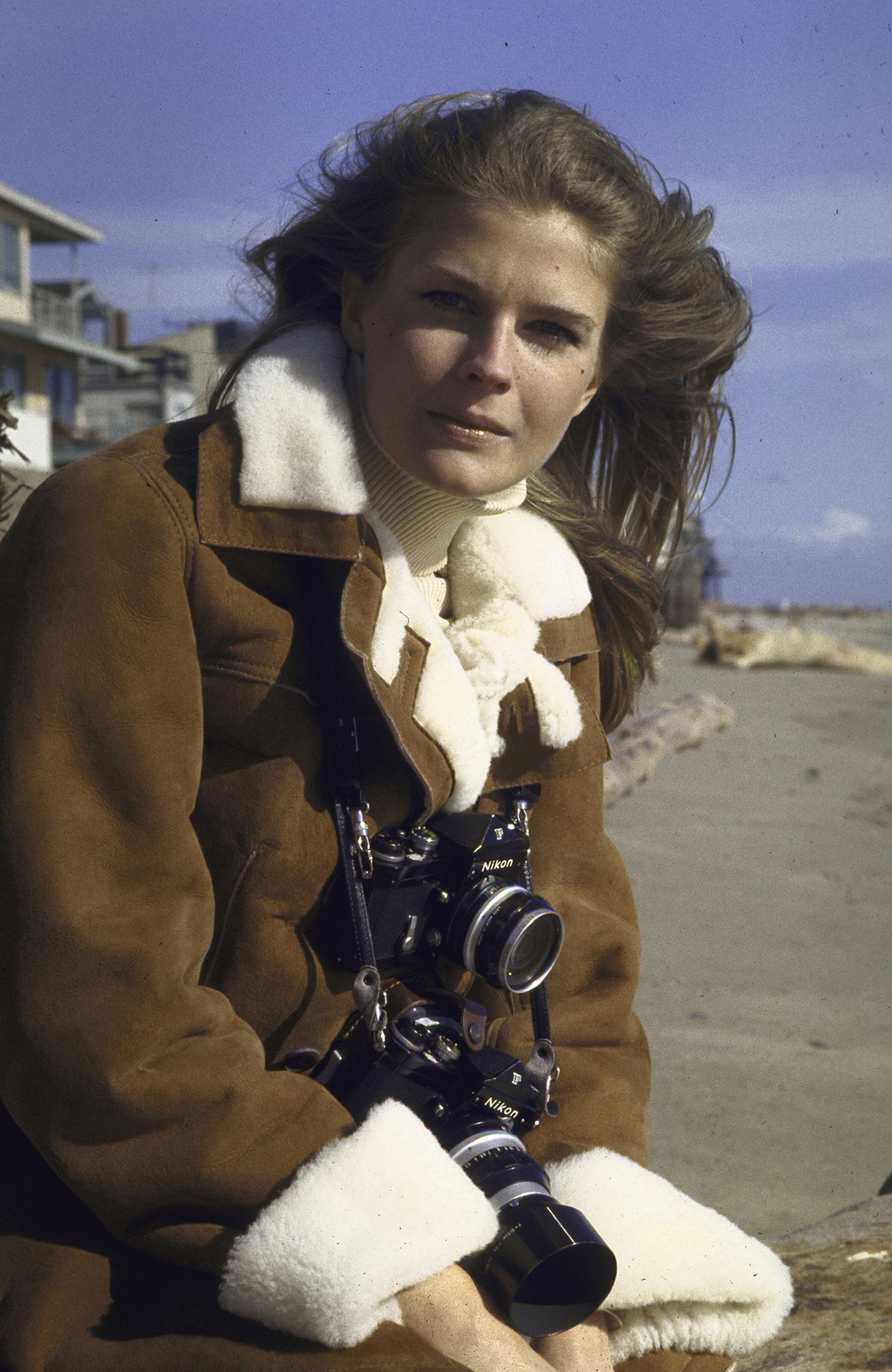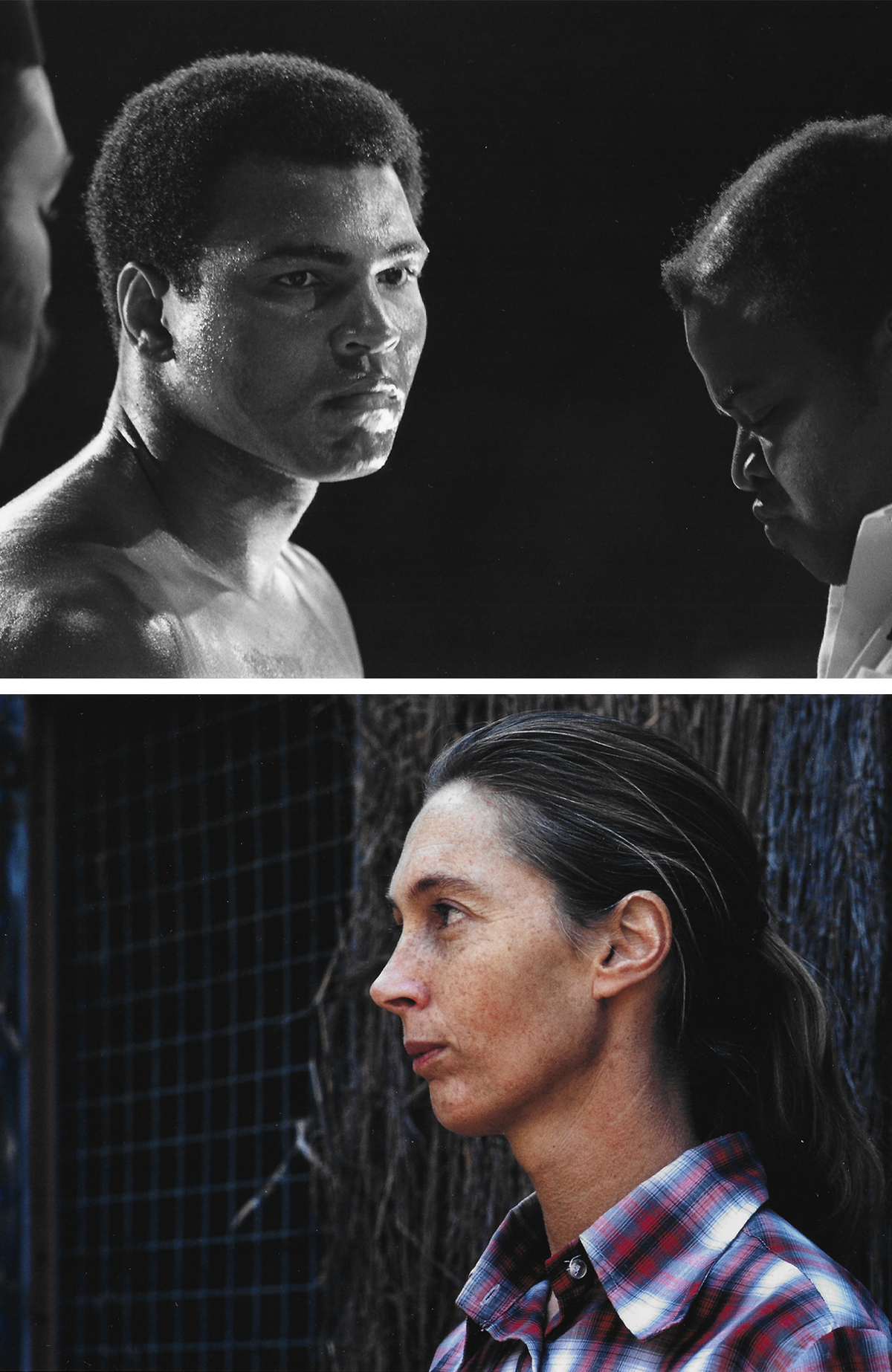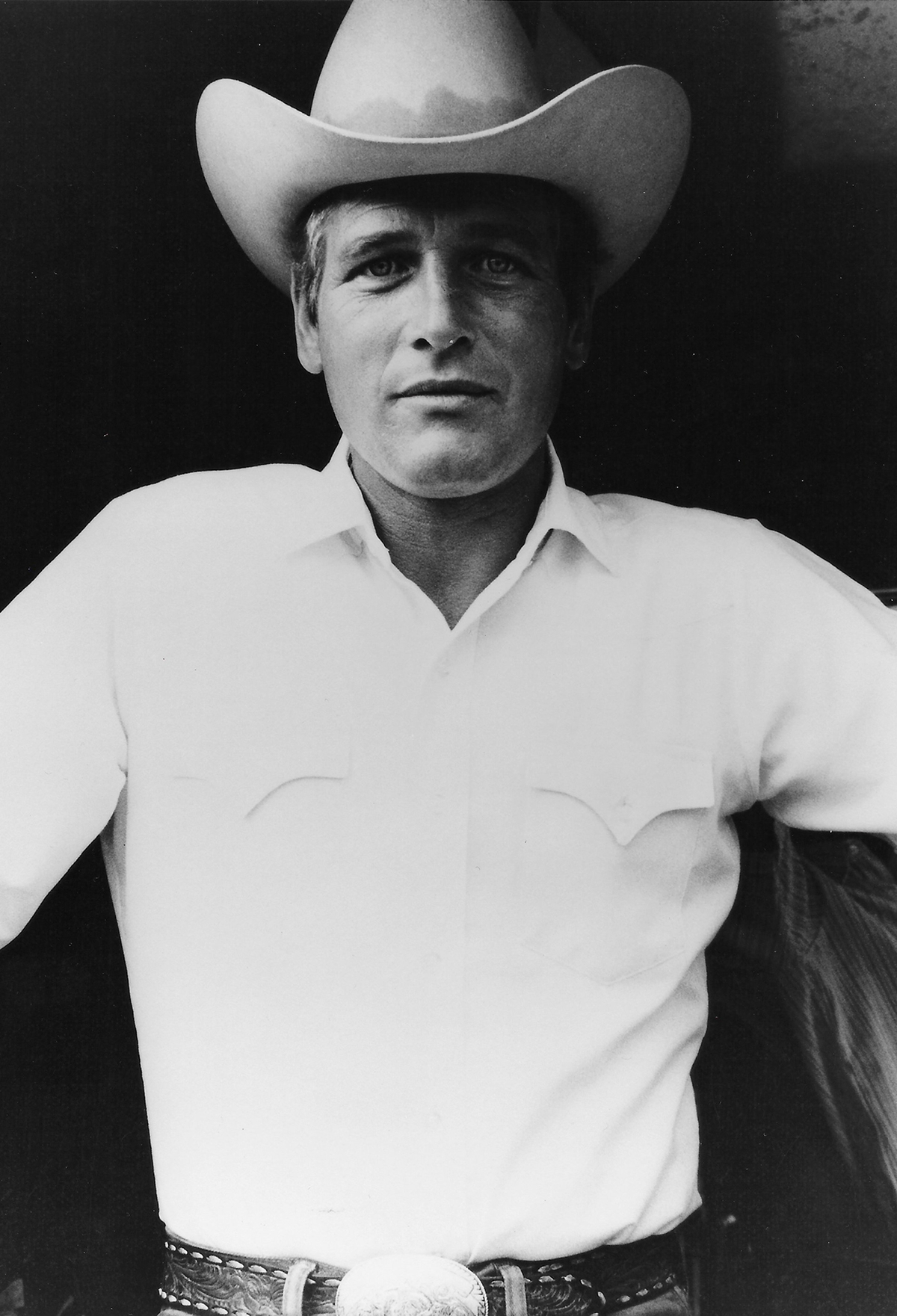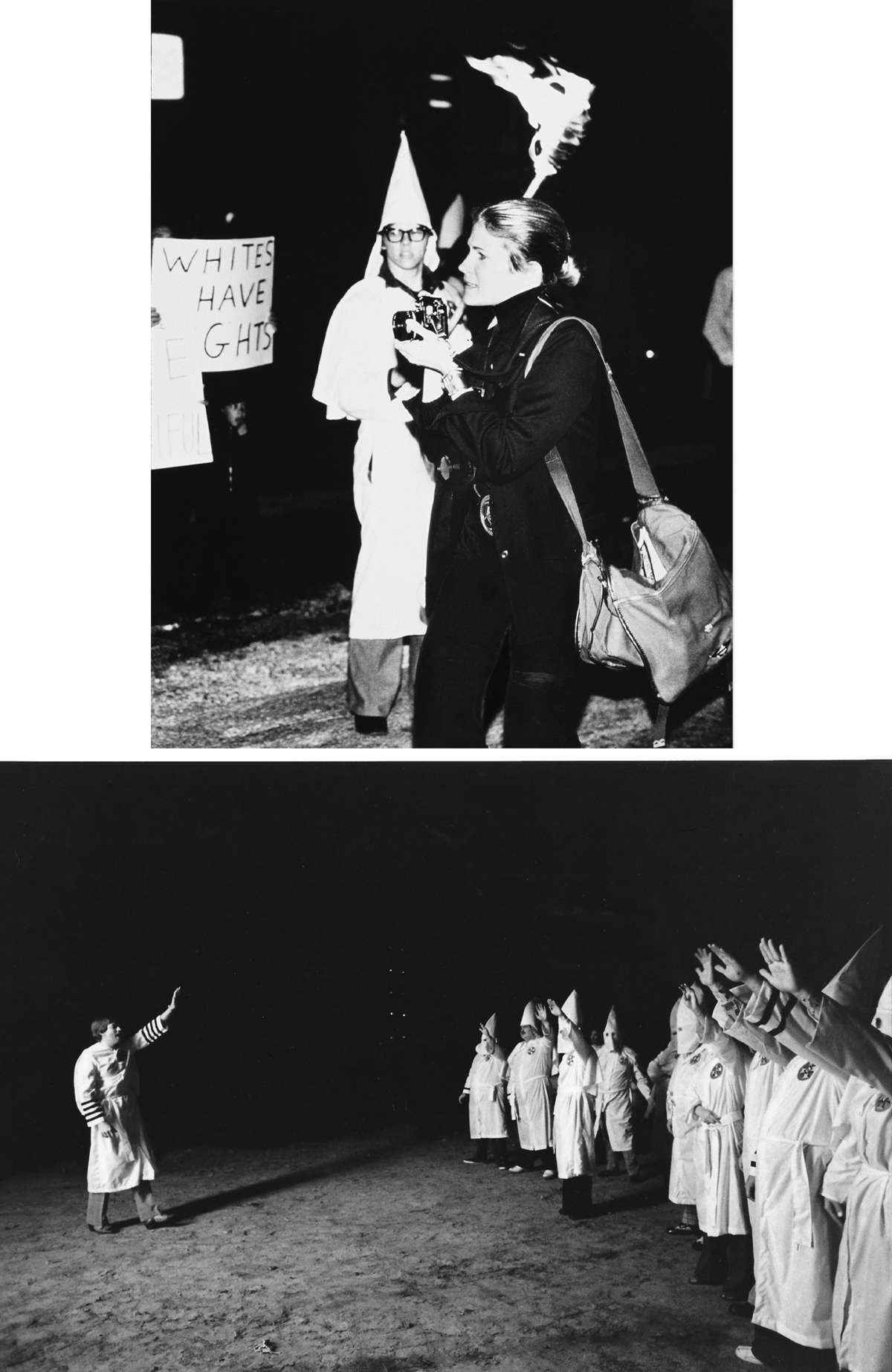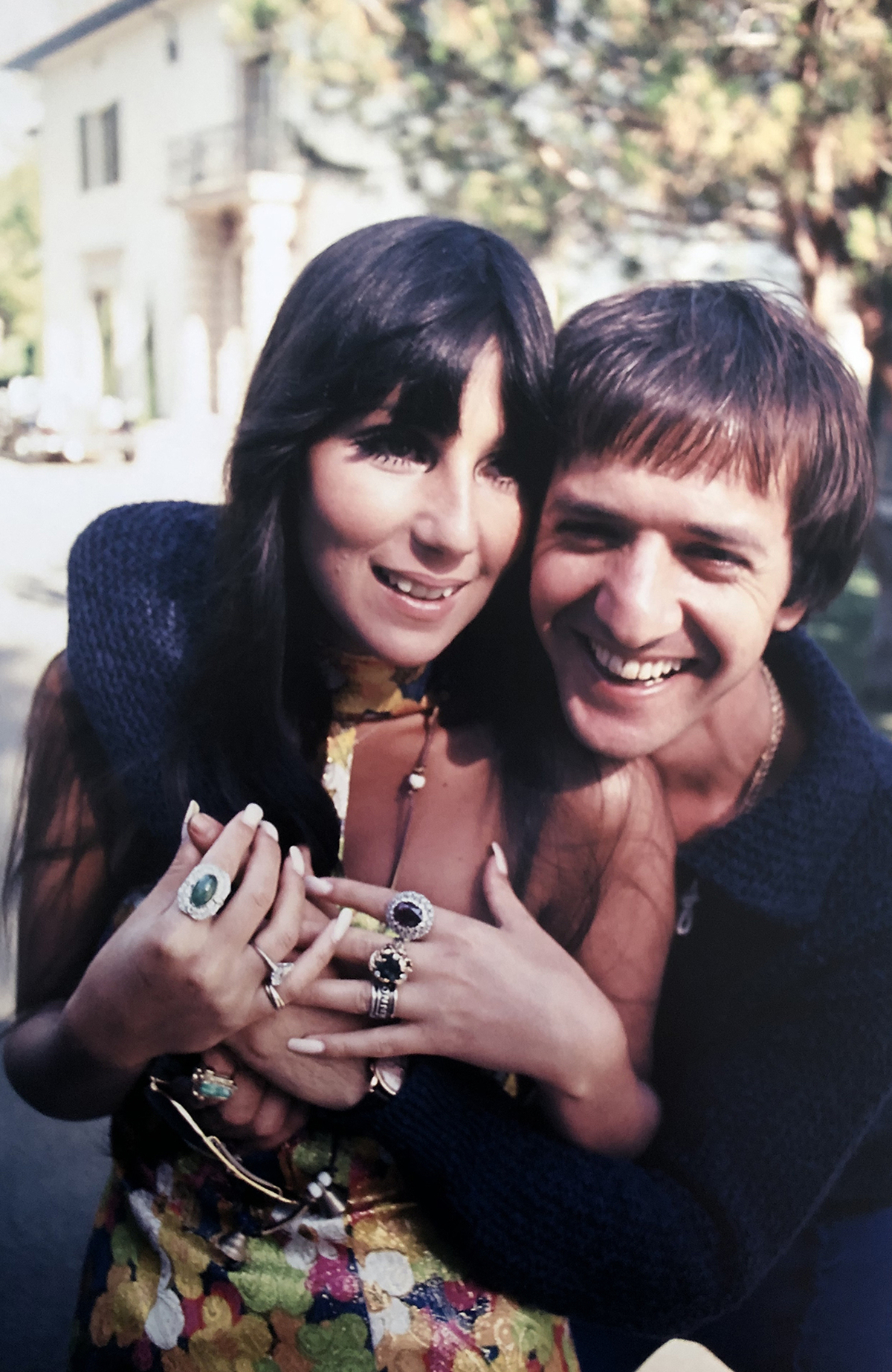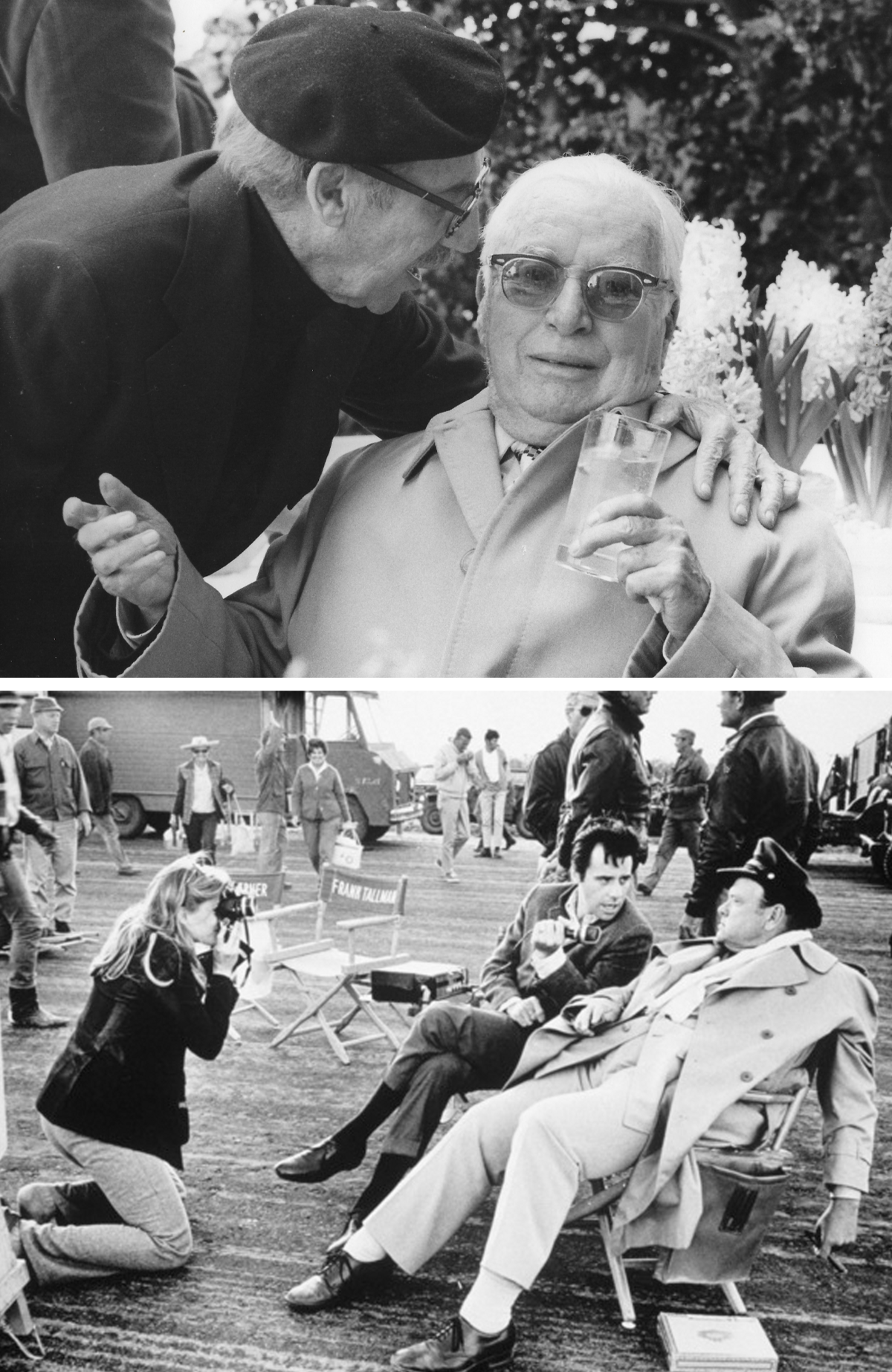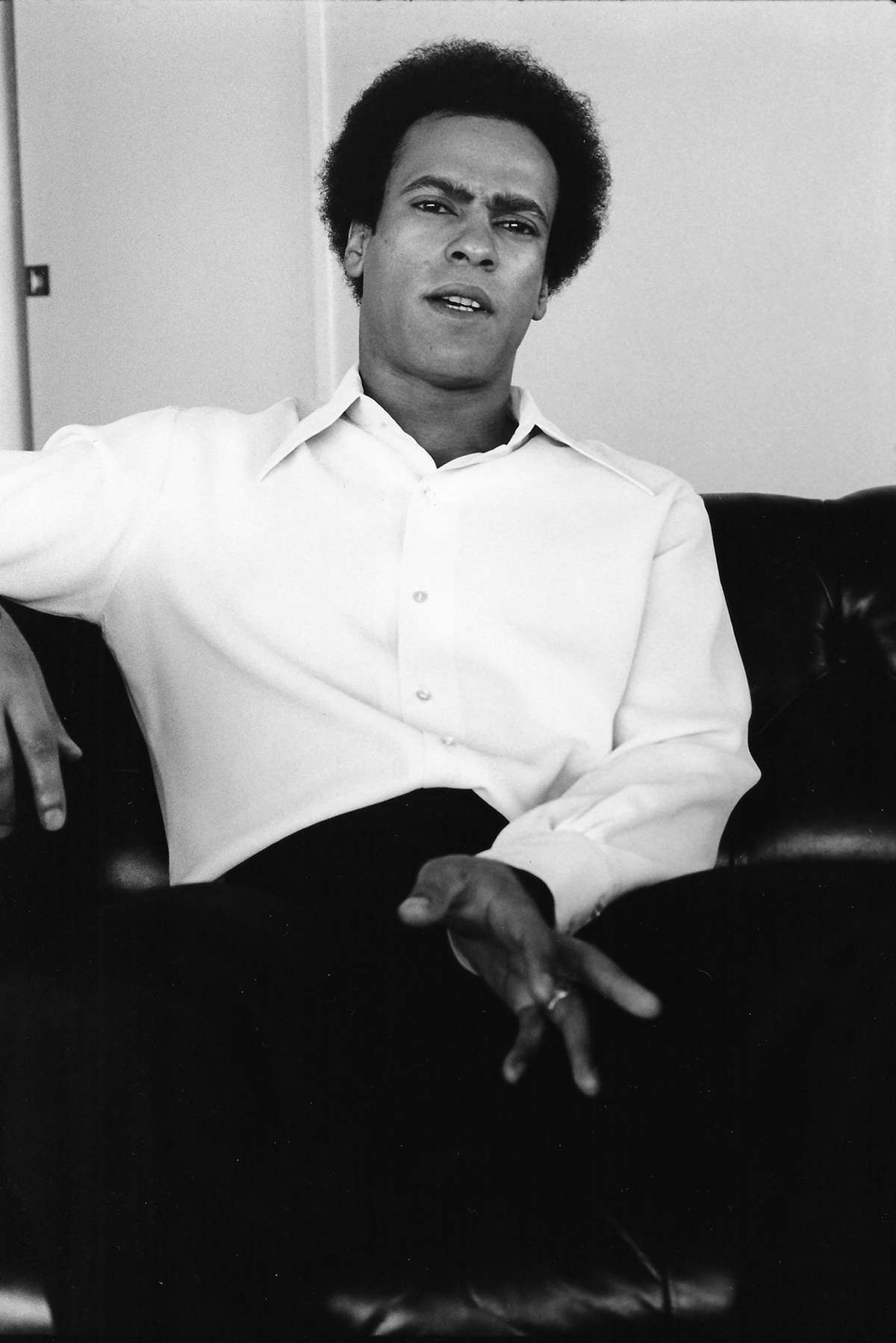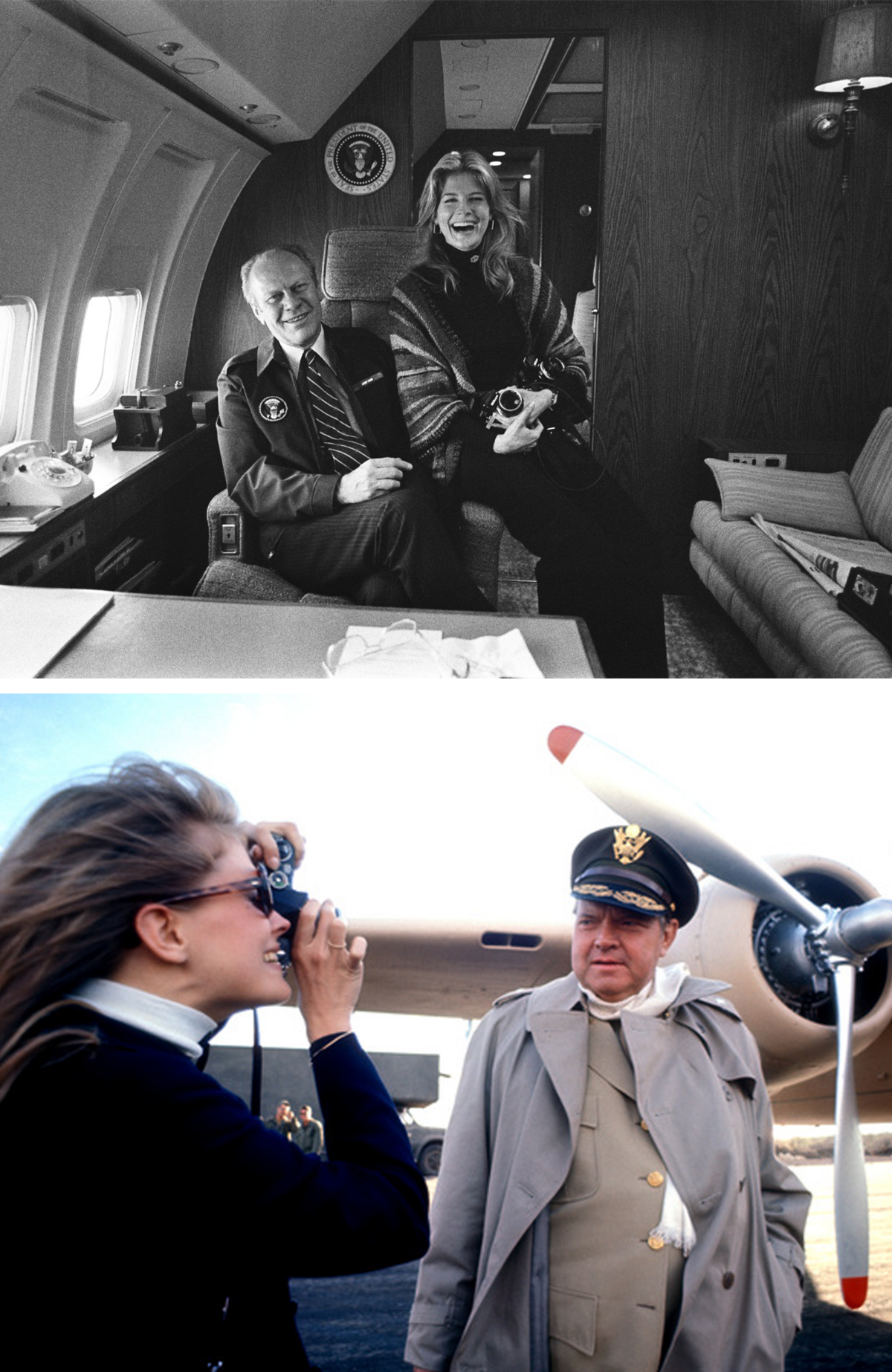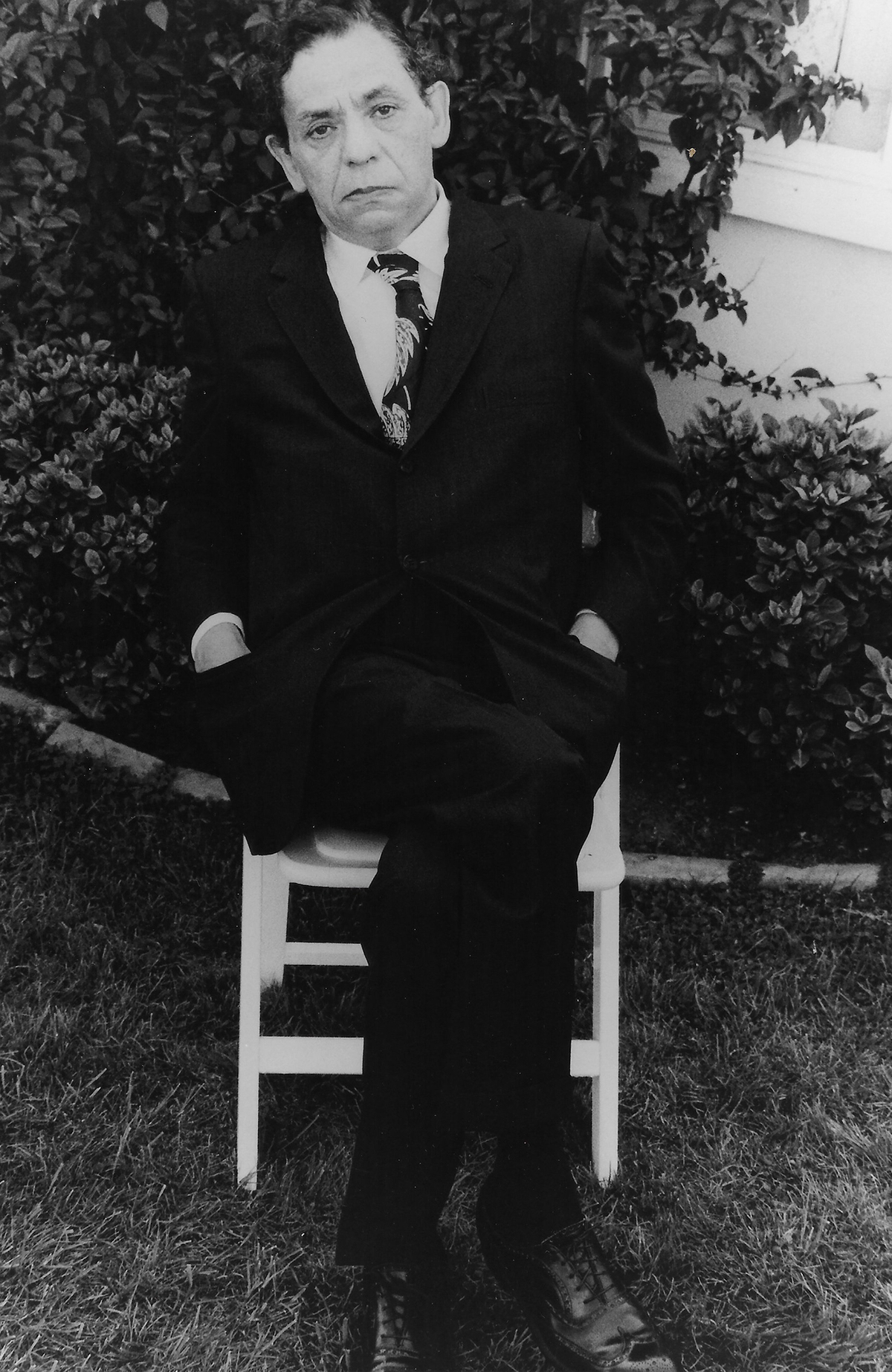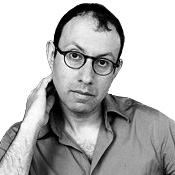It began with “Brenda Starr, Reporter,” a syndicated comic strip that Candice Bergen read faithfully when she was 9 or 10 years old. While Candice never got to play Brenda Starr in the movies (that mootable distinction going to Brooke Shields in 1989), she did get to be her in real life. A woman named Dalia Messick drew and wrote the strip, but back in 1940 she had to change her name to the gender-neutral Dale, because male editors reflexively rejected strips written by women. Dalia’s were rescued out of the trash by an assistant at the Chicago Tribune syndicate, and it was she who is rumored to have suggested that Dalia change her name.
Bergen recalls being obsessed with the comic strip: “I idolized her. Brenda Starr was a ravishing redhead, a news reporter with mauve eyes and earrings that gave off sparks like a rocket. She was fearless, and, of course, she had a Mystery Man named Basil St. John, who wore an eye patch and who was tall, dark, and absent—he may have set in play a pattern of being attracted to inaccessible men.” (Though nothing could be further from the truth, as Candice Bergen has been more Zuleika Dobson, the irresistible heroine of Max Beerbohm’s novel.) Along with Brenda Starr, Messick created a best-friend character, a sidekick reporter named Hank, “who wore dark, masculine-cut suits, wore her dull brown hair in a bob, and, perhaps, a beret. Her ears did not send off sparks,” says Bergen. “It would be 10 years before I understood she was gay. But, together, the pair brought back tough-to-get stories, and I decided that’s what I wanted to do.”
Candice Bergen wanted a life of adventure, like Brenda Starr and her sidekick, Hank. She had an eye for it, but some people couldn’t figure her out. Was Bergen an actress or a photographer? How could she be both? America has never been a good place to practice more than one art.
Two Wooden Companions
You cannot leave Candice Bergen out of any history of show business over the last five decades. She was born into the thin-air club of Hollywood royalty, the daughter of the wildly popular ventriloquist Edgar Bergen, whose greatest fame in the 30s and 40s was on the radio. The ventriloquist and his two wooden companions, Charlie McCarthy and the goofball Mortimer Snerd, made F.D.R. laugh, and Candice—“Candy”—grew up sharing her dinners with Charlie McCarthy, because her father made sure a place was always set at the table for his favorite dummy. She even recalled that Charlie McCarthy had his own bedroom, and it was bigger than hers. Talk about sibling rivalry!
Though she wanted a career like Brenda Starr’s, Bergen was too beautiful not to end up in the movies. Her reviews were often lukewarm, but directors kept casting her, enchanted no doubt by her Scandinavian beauty and—one hopes—by her smarts. She debuted in the adaptation of Mary McCarthy’s novel The Group, directed by Sidney Lumet. She pulled herself through The Sand Pebbles, with Steve McQueen, and reached director Mike Nichols in Carnal Knowledge. When some had their doubts, Nichols reassured, “She’ll act for me.” She did. There were memorable flashes of wit in The Wind and the Lion, with Sean Connery, making one long to have seen them in The Taming of the Shrew. And then something happened.
In 1979, Alan Pakula put her in the romantic comedy Starting Over.
Candice Bergen’s career suddenly got serious, by being funny. “She was hilarious,” wrote the film historian David Thomson, “not least when bursting into song.” She received an Oscar nomination for her supporting role.
But she really came into her own with her portrayal of broadcast journalist and recovering alcoholic Murphy Brown, a character that perfectly showcased Bergen’s delicious brains and snappy wit. She breathed magnificent life into Murphy, won a pride of Emmys, and along the way became a symbol of everything from free speech to single parenthood, briefly turning into a campaign issue in the 1992 presidential election, when Vice President Dan Quayle used Murphy Brown to rail against unwed mothers. The show ran from l988 to l998, though its Trump-era revival failed to be renewed for a second season. Still, Bergen’s creation is indelible. It’s almost as if it couldn’t be re-created—even by Bergen herself.
Murphy Brown perfectly showcased Bergen’s delicious brains and snappy wit.
But throughout it all, there was nothing more rapturous for her than taking photographs: “It just doesn’t get better. It’s so much fun to do it. And then when you think you got the great shot—‘Yes!’”
When she was a student at the University of Pennsylvania in the early to mid-60s, photojournalism was at its peak. “There was Life and there was Look. There was a whole sheaf of magazines that would run photographs,” she says. “And there was Eve Arnold, there was Margaret Bourke-White,” whom Bergen idolized and whom she played in a cameo role in Richard Attenborough’s Gandhi. “I just thought it was the most romantic thing to be a photojournalist.”
She would walk around Philadelphia and “just photograph people. When I took pictures, it took me out of myself. It was a tool of exploration, a way to meet people and places that intrigued me. And, I suppose, it gave me an escape from my looks, which had always seemed to matter so much to people—far more than whoever I was.”
In college, Bergen met Mary Ellen Mark, a striking woman a few years ahead of her who “wore a Leica around her neck.” With modeling money she’d earned over the summer, Bergen bought a Nikon 35-mm. camera and “was shooting anything that moved. Mary Ellen was always encouraging with advice and knowledge. She took me into the darkroom at Penn and taught me to print. We became lifelong friends. I would go in there at seven in the evening and I’d come out at one or two in the morning. I would just print, all by myself in the darkroom.”
Another early mentor was the celebrated photographer Richard Avedon. “I was really starting. I didn’t know anything. He just said, ‘Candy, what you need to do is you need to bore in and explore these subjects, and go in tighter, and go in deeper. Deepen the work.’”
She loved the work. It may not have been lost on her that the gazed-upon, the observed, had now become the observer.
Photojournalism and Acting
Her professional journalism dovetailed with her acting career, beginning with taking pictures of seven women in the cast of The Group, for Esquire. She followed that up with “Is Bel Air Burning?” after a few rock groups moved into Bel Air, an Old Hollywood bastion of luxury and privilege. Brian Wilson bought Edgar Rice Burroughs’s white, early Spanish Colonial—and painted it purple. The Mamas and the Papas bought Jeanette MacDonald’s beautiful house, where “Cass [Elliot] hid her heroin in one of the terraced gardens, behind a big rock,” Bergen recalls. Sonny and Cher moved from a tract house in the Valley to a stunning palazzo in Bel Air, “so it really was the changing of the guard.”
She wrote photographic essays throughout the 70s for NBC’s Today show and magazines like Esquire, Life, Vogue, and Ladies’ Home Journal. Bergen kept on taking pictures that chronicled her time: David Duke saluting his fellow hooded Klansmen at a night rally. Huey P. Newton, co-founder of the Black Panther Party, who was murdered in Oakland, California, in 1989, seated in his leather chair. Muhammad Ali in Munich for what would be an easy fight. Jane Goodall, photographed in all her soulful intelligence. Bergen captured Charlie Chaplin’s return to America to receive an honorary Oscar, and Groucho Marx whispering in Chaplin’s ear.
She described some of her best “gets”: the week she spent with Ali in Munich in 1976 when he was fighting Richard Dunn. “It was such a charade. It was such a sort of sham. When they were boxing in the ring, Ali would shove him into the ropes and give me a big wink, because I was sitting ringside at the fight. They were paying him an insane amount of money, and he came with a huge entourage. I think just their bar bill alone was like $11,000 a day.” She asked Ali to sign a print that she’d made of him the night before the fight. He wrote, “To Candice: Death is so near, and time for friendly actions is so limited.”
“When they were boxing, Ali would shove Dunn into the ropes and give me a big wink, because I was sitting ringside.”
In 1972, Charlie Chaplin returned to America after 20 years in exile to accept an honorary Oscar and a tribute from the Film Society of Lincoln Center. Bergen was sent to accompany Chaplin for Life magazine. She wanted to photograph him outside, in front of his poster at Lincoln Center, “but he was terrified of catching pneumonia,” she recalls, “because a Gypsy had told him that’s how he would die. He was always in a sweater-vest, a suit, a heavy raincoat, and a hat. It was now supposed to be an indoor photograph, but I said, ‘I can’t do this.’” So Chaplin gamely stood in front of the poster in Lincoln Center, but he was so ill at ease that his adored wife, Oona, stepped in, and he relaxed. “She put her arm through his, and that was the cover [shot]. I think he still had the hat on.”
Life then sent Bergen to Walter and Carol Matthau’s house in the Pacific Palisades to photograph a fabulous garden party the Matthaus were throwing for Chaplin’s return. She was the only photographer invited. “Everybody came—Groucho Marx, Cary Grant, the Henry Fondas, William Wyler, Rosalind Russell, Danny Kaye,” she recalls. While there, Bergen stumbled upon a scowling Oscar Levant, the celebrated pianist and wit, seated in a rocking chair among the hyacinths and wearing “a black, three-piece, New York suit and black, shiny wing-tip shoes. Everybody else was in their L.A., open-collar pastel.” She asked him if she could take his picture, and if she could do a piece on him for Esquire.
Bergen spent about two hours interviewing him at home on North Roxbury Drive. A famous recluse, Levant was in his pajamas when she came over. For a return visit, she called him and asked, “Oscar, is three-o’clock still O.K.?” He said, “No, no, that’s too late. You come over right now.” By the time she arrived, he was dead. It was the first dead person she had ever seen. When she later told Richard Avedon what had happened, he asked, “Why didn’t you photograph him?” “I said, ‘Dick!’ He was like, ‘Squandered!’” But the photograph she ended up with is one Avedon would have been proud to claim—a somber, insightful portrait of a man who has made peace with his own gifts and demons, a kind of cross between Buster Keaton and the Grim Reaper.
Fear of Dilettantism
Another memorable assignment was photographing one of her idols, Jane Goodall, the world’s leading animal behaviorist. Ladies’ Home Journal sent Bergen to Tanzania to cover Goodall, holed up in the jungle. “It was an expensive assignment. They had to make a donation to her research center.” She stayed there for about nine days. “I was so relieved to survive the trip,” she recalled. “It was insanely primitive. I got the guest hut—just a hut with caged wire on the windows and the door, because the baboons otherwise would come in to get your bananas, and they had really long teeth.”
Let’s not forget the journalism in Bergen’s photojournalism, for she turns out to be a marvelous writer. The Levant piece, for example, which originally appeared in Esquire, is comic until it is deeply moving. The author of two deftly written memoirs, both best-sellers, Bergen received glowing reviews for Knock Wood, first published 35 years ago (can you imagine any other ventriloquist’s daughter coming up with that title?), and A Fine Romance, published in 2015.

Looking back, Bergen often wished she’d had “the dedication and discipline to become a proper photojournalist. But the mean streets of Beverly Hills and year-round 70 degrees don’t forge strength of character. Of course, I was weak and my looks won out.” It’s not that she didn’t love being an actor (“a very lucky one”), but by the time she was nearing 30, people started referring to her as a dilettante. “I thought, ‘Well, maybe I should try to do one thing well, and stop hopping around.’ I thought I should focus on acting while I’m still young enough to do it, and try to do it well.”
Bergen admits that she “rarely shoots now, and when I do … it’s with my iPhone. Digital photography eludes me. I miss the almost inaudible sound of the Leica. The clunk of a Nikon. I loved framing, composing a shot. The pleasure of getting the shot you’re after. Of getting something special.” Curiously, two subjects she let slip through her fingers were two men very close to her: the legendary director Mike Nichols, who became one of her closest friends, and her husband of 15 years, the renowned French film director Louis Malle.
And so, ultimately, she put aside the camera for the camera, and while we are grateful for one, we have missed the other—but we do have these images to savor, an engaging and vivid chronicle of her time.
Sam Kashner is an Editor at Large for AIR MAIL

